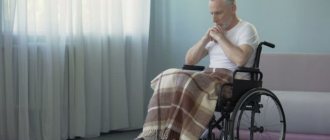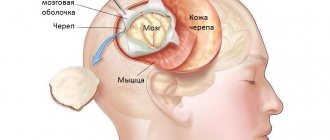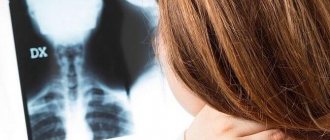Restless legs syndrome: what is it?
As a rule, the symptoms of pathology appear closer to the night, when a person goes to bed. The patient feels itching, tingling or burning in his legs almost every day, which forces him to constantly move them. With these movements, the patient tries to relieve the unpleasant feeling in the legs and fall asleep faster.
In most cases, the exact cause of restless legs syndrome is difficult to detect. If, after a thorough diagnosis, doctors do not reveal anything, the disorder is associated with psychosomatics.
Less commonly, kidney diseases, anemia and a lack of magnesium in the body are involved in the development of pathology. The syndrome is relatively common in pregnant women and the elderly. Most often, the disease develops in patients under 30 years of age. Overall, about 2-5% of people suffer from restless legs syndrome .
Moving your legs at night can result in depression, psychosis and chronic insomnia. Involuntary leg movements during sleep prevent a person from getting enough sleep, which leads to worsening mood, nervousness and chronic fatigue.
Typical picture of restless legs syndrome, or RLS – causes and risk groups
First of all, RLS is considered a sensorimotor disorder, usually manifested by very unpleasant sensations in the legs, which make themselves felt only at rest. To alleviate the condition, a person has to move. This same condition also becomes the main cause of insomnia or regular awakenings in the middle of the night.
RLS can be classified as severe or moderate according to the severity of symptoms and the frequency of their occurrence.
Medical information
Willis-Ekbom disease , the second name for restless legs syndrome, often has a genetic predisposition. Having a close relative with the disease increases the risk of a movement disorder.
Scientists believe that the pathology is associated with a disruption in the production of dopamine , the hormone of anticipation of pleasure. Symptoms of the disease appear in the evening or at night. Therefore, the syndrome is presumably associated with improper functioning of the hypothalamus . The hypothalamus is the part of the brain that is responsible for the circadian sleep-wake rhythm. The syndrome, by the way, can develop without structural lesions of the hypothalamus.
According to ICD-10 (International Classification of Diseases, 10th revision), restless legs syndrome has code G25.8 - Other specified extrapyramidal and movement disorders.
The disorder can be idiopathic or symptomatic . The first option means that the disease is primary, that is, it is the main one and is not caused by other pathologies. In the second option, the syndrome is a consequence or symptom of another disease.
Kinds
There are two types of disease:
- Primary (idiopathic).
- Symptomatic.
Idiopathic restless legs syndrome is the most common type of pathology. It is characterized by earlier manifestation (in childhood). There are family cases of the problem. According to various sources, the frequency of such cases can reach 30-90%. Genetics have discovered a connection between the formation of pathology and disturbances in the structure of certain chromosomes. Scientists have come to the conclusion that the idiopathic form is a pathology that occurs under the influence of many negative factors in the presence of a genetic predisposition.
The symptomatic form manifests itself no earlier than in adulthood (after 45 years) and is a consequence of concomitant pathologies of the body - metabolic disorders, diseases of the nervous system and blood vessels of the lower extremities. Secondary restless legs syndrome quite often occurs in pregnant women in the second and third trimester, but after childbirth the symptoms disappear.
Causes
These include:
- Genetic diseases.
- Brain or spinal cord injuries.
- Misuse of antidepressants , antipsychotics , calcium blockers, as well as medications for nausea, seizures and allergies.
- Deficiency of vitamins, micro- and macroelements in the body. In particular, lack of vitamins B1, B9, B12, calcium, magnesium.
- Pregnancy. Some of the vitamins and minerals in the body of the expectant mother are spent on the formation of the fetus. This can lead to a lack of calcium and magnesium, which can lead to leg twitching at night. In pregnant women, the syndrome is more often observed in the second half of the term.
- Kidney failure. When the disease occurs, the electrolyte balance is disrupted, which contributes to the appearance of muscle cramps and restless legs syndrome.
- Stress.
- Ultra-intense physical activity.
- Diabetes.
- Anemia. Iron deficiency negatively affects the development of pathology.
- Cryoglobulinemia. Accompanied by a complex of symptoms - vasculitis (inflammation of blood vessels), enlarged liver, spleen, joint pain, etc.
- Multiple sclerosis – damage to the brain or spinal cord
- Rheumatoid arthritis is inflammation of small joints throughout the body.
- Hyperthyroidism or hypothyroidism is a dysfunction of the thyroid gland.
- Alcoholism or drug addiction.
- Radiculitis.
- Amyloidosis is a disorder of protein metabolism, which is accompanied by heaviness in the stomach, heart failure, edema and kidney problems.
- Varicose veins and thrombophlebitis.
- Chronic obstructive pulmonary disease (COPD).
- Parkinson's disease.
- Tourette's syndrome.
- Caffeine abuse. Taking coffee or caffeine tablets in large quantities (more than 0.4 g of caffeine) can trigger symptoms of the disorder.
Symptoms
The disease may be indicated by:
- Unpleasant sensations in the legs . These include itching, burning, tingling, crawling, heaviness, distension from the inside, pain of various types, etc.
- Asymmetry of sensations . An unpleasant feeling in the legs appears in each leg with varying intensity, especially at the beginning of the attack.
- Persistent desire to move legs . Thus, a person wants to get rid of unpleasant sensations. If you stop moving, the tingling, itching or burning sensation may return.
- Frequent awakenings at night . Due to unconscious movement of the legs, sleep becomes interrupted. It is often difficult to fall asleep after waking up in the night.
- Deterioration in sleep quality . Daytime sleepiness is an indirect sign of restless legs syndrome.
- Low performance . Occurs due to decreased sleep quality.
- Prolonged falling asleep . A person with restless legs syndrome is afraid to go to bed, because sleep brings discomfort and does not really restore strength.
- Unconscious hand movements in a dream . Along with the movements of the legs, a person can also move his arms. In rare cases, the torso may also move involuntarily. Especially when the unpleasant sensations spread throughout the whole body.
Walking around the house when an attack occurs alleviates the symptoms of the pathology. In addition, massage and rhythmic flexion and extension of the legs temporarily alleviate the intensity of the itching.
To get rid of itching or burning in the legs, a person can scratch the leg until it bleeds.
Symptoms of the disease can appear every night and last for quite a long time. Leg problems often prevent a person from falling asleep.
Discomfort in the legs makes itself felt from approximately 23:00 to 4:00 . This is provided that the person goes to bed at 22:00.
Rarely does restless legs occur while you are awake. This usually occurs when sitting for a long time, when the legs are in one position.
All unpleasant sensations in the legs during the syndrome are subjective. An examination of a patient by a neurologist usually does not reveal serious disturbances in the functioning of the nervous system. Most of the time the problem is in the head.
If during the diagnosis pathologies of the nervous system are nevertheless discovered, they are treated first.
How to calculate the syndrome?
According to experts and patients affected by the symptom, the sensations of RLS can sometimes be quite strange and not amenable to precise description, but can be quite specific: aching, itching, pulling or pulsating sensations, as well as a feeling as if you are receiving a slight electric shock in the legs. Characteristic signs of restless legs syndrome also include:
A strong desire to move your legs, especially if you have been sitting or lying for a long time; Temporary relief with the start of movement; Symptoms worsen in the late afternoon or at night (or during the day and evening). You can notice these symptoms at any age, but RLS is becoming more common among older people. If you observe them for yourself and you are under 40 years old, it is quite possible that the factor of heredity played a role here. With restless legs syndrome, you may also experience the discomfort at other intervals, such as several times in one night, a week, or even less frequently. But, as already mentioned, the frequency of symptoms increases with age.
Restless legs syndrome in children
The pathology is observed in approximately 17% of examined children, which makes the disease common among young patients. Isolated and rare movement disorders have no diagnostic value. But if a child begins to constantly want to sleep during the day, becomes inattentive and whiny, he should be examined for restless legs syndrome.
It is believed that leg problems in children are associated with ADHD - attention deficit hyperactivity disorder . However, little research has been conducted on this topic. Therefore, it is impossible to accurately say about the influence of one disease on another.
The cause of restless legs in childhood may be a deficiency of iron or vitamin B12. Also, in children there is a connection between the syndrome and epilepsy, neurological and mental disorders.
First graders are most often troubled by restless legs. Experts attribute this to a decrease in activity: at school, the child constantly sits at his desk, practically without moving his legs.
The main symptom of the disease in children is prolonged falling asleep . Secondary symptoms include daytime sleepiness, hyperactivity, and low concentration in classes.
Treatment of restless legs syndrome in children is prescribed by a pediatrician.
How to treat the disease?
With secondary restless legs syndrome, effective treatment of the conditions and diseases that cause the syndrome helps: for example, normalizing iron levels in case of iron deficiency (read also: “7 foods rich in iron”) or discontinuing the drug.
However, in any case, self-medication for RLS is unacceptable, since medicine knows a large number of diseases with similar symptoms. If you suspect that you have restless legs syndrome, the first thing you need to do is consult a specialist who will identify the cause of the syndrome and, based on the examination, prescribe therapy.
Treatment of secondary cases of restless legs syndrome is largely based on addressing the underlying cause. Until they are clarified, sleep hygiene, avoidance of alcohol, smoking, and foot baths are recommended. Among the medications, the same drugs are often used as for Parkinson's disease. Their dose is determined by the doctor.
Source: MC.RU
Diagnostics
A preliminary diagnosis is made based on the patient’s complaints at the first appointment with the doctor. Depending on the symptoms, the specialist will refer you for additional examination.
To exclude diabetes and anemia, the level of sugar, hemoglobin, iron and ferritin in the blood is determined. Ferritin is a protein that transports iron throughout the body.
Additionally, the content of magnesium, B vitamins and thyroid hormones in the body is determined.
The structure of the nervous system is examined using MRI/CT of the head and spine. The functions of the nervous system are assessed by performing electroneuromyography , a procedure that reveals the contractility of the muscles of the lower extremities.
Most often, if symptoms of the disease are present, polysomnography . This is a sleep study, during which the pulse, breathing parameters, body movements, heart function, snoring, talking in sleep, etc. are recorded. Information about the processes occurring during sleep is collected by sensors attached to the body. The study is carried out in a medical facility.
To whom is polysomnography indicated - read this article
Polysomnography is the only procedure that helps accurately determine the severity of restless legs syndrome. Equipment connected to the body records every movement of the legs. Thanks to this, you can track the number and intensity of all movements. And as a result, make the correct diagnosis.
To assess blood flow in the legs, Doppler ultrasound . The procedure helps to identify blood clots in the veins of the legs and determine the speed of blood transport through the vessels.
It is important to distinguish restless legs syndrome from akathisia. Akathisia is characterized by unpleasant sensations in the body that can be relieved by moving the body or limbs. Unlike restless legs syndrome, akathisia most often occurs during wakefulness.
Why is RLS dangerous?
Restless legs syndrome is rarely associated with any serious medical problem. Most often, he simply does not let you sleep. You move your legs, spin, and cannot fully rest. As a result, you feel sleepy and tired during the day.
Chronic lack of sleep caused by restless legs syndrome can lead to the development of chronic fatigue syndrome or depression.
Chronic sleepiness itself is a gift. Because of this, you lose productivity, you don’t have enough energy for your career or relationships. But restless legs syndrome can be a sign of much bigger troubles. Sometimes it accompanies such conditions Everything you need to know about restless legs syndrome, such as:
- Peripheral neuropathy. This is the name given to nerve damage in the arms and legs. The root cause of this may be diabetes or alcoholism.
- Iron deficiency in the body.
- Kidney failure.
- Rheumatoid arthritis.
- some spinal cord lesions.
Therefore, restless legs syndrome cannot be ignored.
Drugs
To combat the primary disease, use:
- Antiparkinsonian drugs (Mirapex, Levodopa, Pramipexole, Bromocriptine, etc.). They are dopamine receptor agonists. The doctor selects drugs from this group individually. Reception begins with a minimum dosage. If necessary, the amount of medication taken is increased. If there is no effect, the doctor may prescribe another drug.
- Antiepileptic drugs (Carbamazepine, Phenobarbital, Neurontin). Used if drugs from the antiparkinsonian group are ineffective.
- Benzodiazepines (Phenazepam, Alprazolam, Nitrazepam, Triazolam). They have a hypnotic effect and indirectly affect convulsive activity. Despite this, drugs in this group are effective in treating restless legs syndrome.
- MAO inhibitors – monoamine oxidase. (Metralindole, Pirlindole, Befol, Moclobemide. Antidepressants that are used in the treatment of Parkinson's disease and cataplexy (state of stupor)
- Opioid drugs . They are used exclusively as prescribed by a doctor in case of ineffectiveness of other medications.
- Ointments and gels (Nurofen, Ibuprofen, Dolgit, Ketoprofen). Topical painkillers relieve discomfort
In severe cases of the disease, medications can be taken for a year or more. The doctor’s task is to achieve the maximum therapeutic effect with the minimum possible dosage. If symptoms occur sporadically, not every day, treatment is divided into courses with breaks between them. Naturally, the doctor makes all adjustments to the therapy program.
Drug treatment has contraindications. First of all, anticonvulsants are not recommended for use by pregnant women, nursing mothers, and people with kidney or liver damage.
Note that antipsychotics, tricyclic antidepressants and antidepressants from the SSRI group (selective serotonin reuptake inhibitors) can worsen the manifestations of restless legs syndrome. Take only those medications prescribed by your doctor. If side effects occur, tell your specialist about them.
In addition to the main medications for restless legs syndrome, the following are used:
- Metformin. Reduces blood sugar levels. Used if leg restlessness is caused by diabetes.
- Ibuprofen. An anti-inflammatory pain reliever may be taken to relieve leg discomfort.
- Fenyuls. Iron-containing drug for the treatment of anemia. Taken if the syndrome is associated with iron deficiency.
- Iodine preparations. Prescribed if a connection between the syndrome and dysfunction of the thyroid gland is detected.
- Vitamin and mineral complexes.
Name: Restless Legs Syndrome (RLS), synonym : Willis-Ekbom disease (WED)
Main online resources on the problem of RLS:
International Restless Legs Syndrome Study Group
(IRLSSG, the International Restless Legs Syndrome Study Group)
European Restless Legs Syndrome Study Group
(EURLSSG, European RLS Study Group)
Willis-Ekbom Disease Foundation
One of the frequent complaints to a phlebologist is some kind of unpleasant sensation in the legs. Often there are some kind of “networks” / “stars” on the legs. That’s it, you don’t have to worry about diagnostics: they wrote “phlebopathy” or something else like that, prescribed something to anoint and drink, and, satisfied with each other, parted with the patient. I'm afraid that patient satisfaction may not last long. Especially if he has restless legs syndrome (RLS).
The situation is paradoxical. This sometimes painful condition affects between 5% and 15% of the population, with the proportion of sufferers increasing in older age groups. There is already quite a lot of Russian-language information on RLS on the Internet. But awareness of this problem in the professional environment is simply catastrophically low. I think this is due to the fact that just a few years ago it was simply impossible to find high-quality information on RLS in Russian on the Internet.
Although there is now a lot of good and varied information on RLS, I want to highlight a few key points and features that seem interesting to me.
Restless legs syndrome is a neurological disorder. Specialist - neurologist!
A little epidemiology from a study conducted in the USA, France, Germany, Italy, Spain and the UK and involving 15,391 people [1]:
— Overall prevalence 7.2%
— RLS occurred at least 2 times a week and was moderate or severe in intensity in 2.7%
- Occurs 2 times more often in women than in men
— The incidence increases with age up to 76 years, and then decreases
The division into primary and secondary is well known. The pathogenesis of primary (idiopathic) RLS is unknown, but leading theories revolve around dopamine metabolism in the central nervous system.
Secondary:
- Iron deficiency. There is a very revealing small study [2]: in a group of 18 elderly patients with RLS, serum iron averaged 33 ng/ml versus 59 ng/ml in 18 patients without RLS. At the same time, the hemoglobin level was the same . Therapy with iron supplements, administered to 15 patients, eliminated the symptoms of RLS in 14 people within 2 months.
— Pregnancy . An example from a study of 626 women [3]: before pregnancy, 10% had RLS. During pregnancy, this figure increased to 27%! The maximum is gained in the third trimester and quickly regresses after childbirth.
— Chronic venous insufficiency (CVI). There are studies that have shown an association between CVI and RLS. Moreover, treatment of CVI can reduce the manifestations of RLS. UpToDate cites a study in which 312 of 1,397 patients seeking treatment for CVI had restless legs syndrome. 113 of these three hundred patients received sclerotherapy, which alleviated RLS symptoms in 98% of patients initially. After 2 years, the effect was maintained in 72%. This, of course, is cool, but it’s completely unclear how the presence of varicose veins and the presence of venous insufficiency correlated. And why eliminating varicose veins led to regression of RLS. Dubious article. True, I judged it by the abstract; it is possible that in the full text everything is convincing and beautiful.
As stated there, in UpToDate:
Treatment of chronic venous insufficiency with hydroxyethyl rutosides (these are “venous” drugs common in our pharmacies) also leads to improvement, although not as dramatic as when using sclerotherapy.
A meta-analysis of 15 studies of this group of drugs involving 1973 patients showed that in the treatment group, RLS improved in 36% of patients versus 26% in the placebo control group. By the way, this is where the field for using homeopathy is! Will help every fourth person simply due to the placebo effect
Diagnostic criteria:
IRLSSG 2012 (current today)
The desire to move the legs, caused by unpleasant sensations in them. Sometimes this desire appears outside of discomfort. Sometimes such sensations occur in addition to the legs in the arms or other parts of the body.- The desire to move the legs and discomfort in them arise or intensify during rest or decreased activity (sitting or lying down).
- The desire to move the legs and the discomfort in them weaken or go away with movement or stretching, at least as long as the movements continue.
- The desire to move the legs and discomfort in them appear or intensify in the evening and at night. In severe cases, the nocturnal increase may not be very noticeable, but it should have been present early in the development of RLS.
- Symptoms cannot be fully explained by other causes (convulsions, uncomfortable position, swelling of various origins, arthritis, etc.)
The concept of “periodic leg movements” is broader than RLS and can occur in various diseases. Not all periodic leg movements = RLS.
Additional criteria:
- Family history of RLS
- The effect of dopaminergic drugs
- Recording periodic leg movements during polysomnography and other studies.
Treatment.
In general, RLS is divided to differentiate treatment tactics into intermittent (Intermittent), daily (Daily) and refractory (Refractory). There is a simpler division - into two types (up to 2 times a week for a year or more than 2 times a week). Without going into details, I will note that the means of treatment are:
Pharmacotherapy
- Iron supplements. Iron therapy. Interestingly, a trial of iron supplementation is offered to all patients with RLS, even those with normal serum iron levels, and may be effective in such cases. The exception is patients with contraindications to its use.
— Levodopa
- Dopamine agonists (for example, the drug cabergoline "Dostinex", which is widely used when it is necessary to suppress lactation, pramipexole, ropinirole)
— Opioids and their agonists, including tramadol
— Benzodiazepymes and their agonists
For refractory RLS, gabapentin (an antiepileptic drug) is added or switched, the dopamine agonist is changed, dual therapy is used, etc.
Non-drug therapy is recommended for intermittent or daily RLS and may include (not everything is listed, but what seemed noteworthy to me):
— Avoid “provocateurs”: nicotine, alcohol, caffeine. About alcohol it is said that it is not allowed after 18.00
— Massage, gymnastics
— Heating pads and hot baths
It’s interesting that on the RuNet, more or less decent information is often mixed with some kind of savagery and perversion. For example, on one of the sites dedicated to RLS, in the non-pharmacological treatment section, after the above, there is suddenly an addition:
You can also use physiotherapy - transcutaneous electrical stimulation, vibration massage, darsonvalization of the legs, reflexology and magnetic therapy.
Well, where did this come from? But it will begin to roam the network and the minds of our patients. No magnets needed. Contact a specialist for proper treatment.
| Summary of IRLSSG recommendations for long-term management of RLS | Summary of recommendations for the long-term treatment of RLS/WED |
| Complete IRLSSG recommendations for long-term management of RLS based on evidence-based principles | The long-term treatment of restless legs syndrome/Willis–Ekbom disease: evidence-based guidelines and clinical consensus best practice guidance: a report from the International Restless Legs Syndrome Study Group |
One of the problems of RLS is augmentation - worsening with long-term therapy with dopamine agonists (for example, the drug Levodopa). Against the background of quite effective elimination of evening and night symptoms, manifestations of RLS begin to appear earlier - during the day, spreading to the torso and arms. In this case, increasing the dosage of the drug leads to even greater deterioration.
Due to the lack of standards of treatment for general practitioners and non-specialists in this development, IRLSSG, joining forces with the same European group EURLSSG and the Willis-Ekbom Disease Foundation, created a “task force”, which this year (2015) proposed its recommendations to case of progression of RLS.
For starters, my translation of the official IRLSSG questionnaire for assessing the severity of RLS :
Materials used (but not only these):
1. Allen RP, Walters AS, Montplaisir J. Restless legs syndrome prevalence and impact: REST general population study // Arch Intern Med. 2005. Vol. 165. P. 1286.
2. O'Keeffe S., Gavin K., Lavan J. Iron status and restless legs syndrome in the elderly // Age Ageing. 1994. Vol. 23. P. 200.
3. Manconi M., Govoni V., De Vito A. Restless legs syndrome and pregnancy // Neurology. 2004. Vol. 63. P. 1065.
4. Materials of IRLSSG https://irlssg.org/, EURLSSG www.eurlssg.org, Willis-Ekbom Disease Foundation https://willis-ekbom.org/
5. Of course, the irreplaceable UpToDate.
phlebologist Evgeny Ilyukhin
Treatment at home
Restless legs syndrome can be treated without medication. But before taking independent measures, you need to exclude serious diseases that may be harbingers of restlessness in the legs. To do this, visit a doctor and undergo the diagnostics prescribed by him. Afterwards, you can supplement the main therapy with treatment at home. For this:
- Consume less caffeinated products. This includes coffee, strong tea, dark chocolate, cola, and energy drinks.
- Stop smoking if you have such a habit.
- Take a walk before bed.
- Take a shower or bath in the evening.
- Consume enough vitamins. For example, from vitamin-mineral complexes
- Do light exercises 2 hours before bedtime.
- Don't sit in one position for a long time.
- Find a hobby to take your mind off your stress.
- Read books at night.
- Practice yoga, auto-training, meditation
- Do self-massage or ask family members to do it.
- Stretch your legs before falling asleep.
- Always fall asleep and wake up at the same time.
- Ventilate the room before going to bed.
- Sleep in complete darkness with the curtains tightly closed.
- Buy a comfortable mattress along with the bed (view on the manufacturer’s official website)
Further treatment methods are not home therapy, but they also effectively help combat foot pathology.
To treat restless legs syndrome, you can:
- Workout. For example, swimming. Regularly working your entire body muscles will help you sleep better and reduce the risk of leg cramps.
- Carry out electrical stimulation. Helps relax leg muscles and reduce nervous activity. The procedure is prescribed by a doctor.
- Sign up for acupuncture.
- Relax in a sanatorium and undergo a physical therapy program. It usually includes magnetic therapy, mud baths, lymphopressotherapy, hydrotherapy, etc.
- Visit a psychotherapist. A specialist will help you cope with the problem if it is related to a mental disorder.
Order natural vitamins using the link
Folk remedies
Let us immediately note that traditional medicine can only complement the main therapy prescribed by the doctor. They should not replace traditional drug and non-drug treatment.
Folk remedies that eliminate restlessness in the legs include:
- Horseradish. The crushed roots of the plant are mixed with moonshine and left for 5 days. The resulting tincture is rubbed on the legs from the knees to the feet before going to bed.
- Tinctures of sedative herbs. Tinctures of hawthorn, valerian, peony, mint and motherwort are mixed. Then they go to a dark, cool place and infuse there for a week. The resulting mixture is taken 1 teaspoon before bedtime. Before use, it is recommended to discuss the use of tinctures with a specialist.
- Sheep's wool. Wearing socks made of this material helps relieve restless leg syndrome. The main thing is to get used to the uncomfortable sensations that may arise when wool comes into contact with the skin.
- Melissa infusion. To prepare, mix ½ teaspoon lemon balm in a glass of hot water.
- Kuznetsov applicator. Standing on it for 10-20 minutes a day helps to cope with unpleasant sensations in the legs.
- Rolling a rolling pin with your feet. Before going to bed, it is useful to roll a rolling pin with your feet while sitting in a chair.
- Walking on your knees. Exercise improves blood circulation in the legs. However, moving your body on your knees puts stress on your spine and knee joints. For diseases of the musculoskeletal system and lesions of the knee joints, the exercise should be carried out with caution.
- Olive oil for rubbing.
- Foot baths with herbs.
- Chamomile tea.
- Aromatherapy using essential oils.
- Cool compresses for feet.
- Alcohol tinctures with pepper for rubbing feet.
Nutrition for restless legs syndrome
The diet should be moderately high in calories and contain the correct ratio of proteins, fats and carbohydrates. A healthy diet maintains the level of micro- and macroelements in the body, thereby reducing the risk of the syndrome.
Calorie content for an ordinary person is calculated using the formula 30 kcal per 1 kg of weight . That is, a person weighing 70 kg should consume 2100 kcal per day. This is an approximate figure; everyone's daily caloric intake will be different.
The ratio of proteins, fats and carbohydrates should be 3:1:6, respectively . If we take the same person weighing 70 kg, he needs to eat 630 kcal from protein (about 150 g of protein products), 210 kcal from fat (23 g of fat, preferably unsaturated - fish oil, vegetable fats) and 1260 kcal from carbohydrates (315 g carbohydrates).
When losing weight, calorie content may be less than 30 kcal per 1 kg of body weight. In addition, due to the characteristics of the body, the amount of calories consumed may vary.
Avoiding sweet and refined foods during treatment will help you get rid of restless legs syndrome.
It is recommended to enrich the diet with nuts, fish, green vegetables and seafood. You should eat less fruits because they contain sugar.
Homeopathy for restless legs syndrome
To eliminate the syndrome, homeopathic remedies are also taken. Among them:
- Rhus toxicodendron. A bushy plant native to America. Used in dermatology in the form of ointments. Also used to relax leg muscles.
- Ferrum metallicum . An iron-containing product used for anemia.
- Kali phosphoricum. Potassium phosphate. Potassium is needed for proper muscle and heart function.
- Zincum metallicum. Homeopathic medicine based on zinc.
- Argentum nitricum. Product based on silver nitrate.
Homeopathic medicines are taken in consultation with the attending physician
How to sleep when symptoms appear
- Walk around the house. If unpleasant sensations appear while falling asleep, do not lie in bed. Instead, walk around the room for 5-10 minutes. As soon as the unpleasant feeling in your legs passes, go to bed.
- Apply ice to your feet. This will soothe your feet.
- Take contrasting foot baths. Pour warm water into one basin and cool water into the other. Place your feet first in a warm basin and hold them there for 10-15 seconds. Then move your feet into cool water and hold them for 10-15 seconds. Alternate warm water with cool water 3-5 times. As an alternative, you can douse your feet by changing the temperature of the water from cold to warm and vice versa.
- Massage your feet. This will improve blood flow in them.
- Drink soothing tea. Drinks with lemon balm, mint, motherwort and valerian help relax muscles and eliminate spasms.
View orthopedic mattresses on the manufacturer’s website
Prevention
Preventative measures are almost no different from non-drug treatments. To prevent the development of the disease, it is recommended:
- Maintain physical activity.
- Take vitamins.
- Walk 2-3 hours before bedtime.
- Do not smoke, do not abuse alcohol.
- Take up meditation or auto-training.
- Avoid stress.
- Maintain a sleep-wake schedule. Always get up and go to bed at the same time.
- Pour warm and cold water over your feet alternately.
- Perform a foot massage.
- Practice aromatherapy.
- Keep your feet warm
- Do not wear tight socks, pants or tights. This impairs blood flow in the legs. During the cold season, wear socks made of natural wool.
If restless legs syndrome is a consequence of an underlying disease, measures must be taken to prevent the primary disease from becoming chronic. To do this, you should undergo preventive examinations.
Reviews
Maria, 53 years old
I have been living with varicose veins for 20 years. About a year ago I began to feel bothered by itching in my legs. As soon as I get into bed it begins. I went to the Internet for answers. After searching for information on the Internet, I was surprised - it turns out that my problem is very similar to restless leg syndrome. I started rubbing my feet before going to bed. For a while the unpleasant sensations passed. But I couldn’t sleep normally. I went to the doctor - the doctor confirmed the diagnosis. Now another sore has been added to varicose veins.
The doctor prescribed sedative pills and medications for varicose veins. I started taking foot baths. After a few weeks, the itching went away.
Svetlana, 35 years old
When I was pregnant with my third child, I constantly experienced burning and tingling in my legs. I kept wanting to scratch them and move them. By nightfall the sensations intensified. I even woke up in the middle of the night to comb myself properly. Once I dreamed that my legs were on fire.
The unpleasant sensation went away on its own after childbirth. My husband saved me from itching. Before going to bed, he rubbed my feet. I couldn’t do it myself; my stomach was already big by that time.
Symptoms of RLS
Restless legs syndrome is characterized by the following symptoms:
- The occurrence of painful sensations in the lower extremities, expressed in the form of itching in the legs, twitching of nerve endings, pain. Patients cannot accurately describe the pain factor: some complain of aching pain, others of spontaneous pain arising in different parts of the legs. The sensations are smooth, they are not concentrated at one point all the time and change localization, flowing from one place to another.
- RLS is characterized by the manifestation of symptoms only when the legs are at rest, most often when the patient falls asleep. Due to the constant desire to change the position of the body, the brain cannot go into sleep mode and turn off the nervous system, so chronic insomnia occurs. Such symptoms (selective in time of onset) are called circadian - occurring with a certain rhythm. In the morning and daytime, the symptoms do not bother the patient; he can take a short nap, but he still does not have enough full sleep.
- Unpleasant sensations disappear with the movement of the lower extremities, hence the name of the pathology. To get rid of the irritating factor, patients begin to jerk their legs, change their position; with obsessive pain, a person can get up and start walking around the room, but as soon as he goes back to bed, the symptoms return.
- Involuntary movements of the lower extremities sometimes occur even in a state of complete sleep. If the patient manages to fall asleep and enter the slow-wave sleep phase, he may continue to unconsciously jerk his limbs. Such movements may occur only a few times, or may last throughout the night, depending on the severity of the disease.
From the above, it is clear that restless legs syndrome is expressed in one striking symptom - unpleasant sensations in the limbs in a state of complete rest. But these sensations are subjective; no doctor will give a typical picture of their manifestation. During a neurological examination of patients with RLS symptoms, physicians most often do not detect specific focal pathology, sensory impairment, or reflex distortion. This means that the pathology itself does not manifest itself in any way at the time of examination, which makes it difficult to diagnose.










